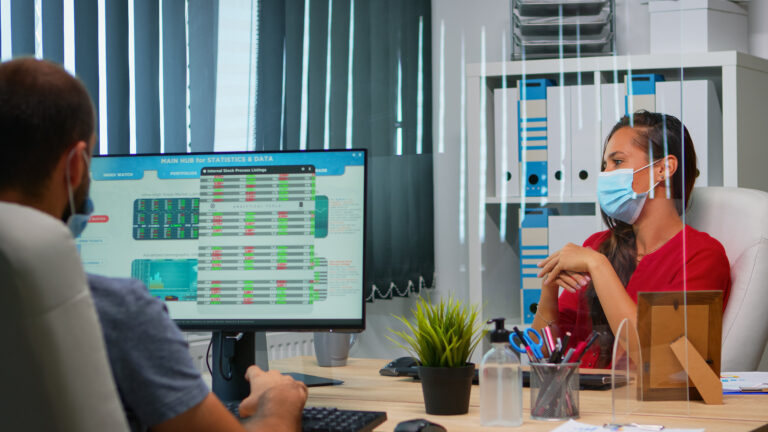Remote Patient Monitoring (RPM) & RPD Billing: The AI Advantage for Chronic Disease Management Practices
Chronic disease management is one of the most demanding aspects of modern healthcare. Conditions like hypertension, diabetes, COPD, asthma, heart failure, chronic kidney disease, and obesity require continuous oversight—not just periodic office visits. As a result, Remote Patient Monitoring (RPM) and Remote Physiological Data (RPD) collection have become essential tools for practices striving to improve outcomes while maintaining strong revenue cycles.
But with increased opportunity comes increased administrative burden. Billing RPM/RPD services requires consistent documentation, accurate coding, and compliance with payer-specific rules. This is where Artificial Intelligence (AI) makes a measurable difference.
For chronic disease management practices in internal medicine, pulmonology, cardiology, nephrology, endocrinology, and family medicine, the convergence of RPM + RPD + AI-driven billing represents the next era of care delivery—one that is smart, efficient, compliant, and highly profitable.
The Rise of RPM & RPD in Chronic Care
RPM and RPD allow clinicians to track patient health in real time using connected devices. These devices continuously record vital data such as:
-
Blood pressure
-
Blood glucose
-
Heart rate and rhythm
-
SpO2 / oxygen saturation
-
Weight
-
Peak flow and respiratory metrics
-
Activity levels
This data is transmitted automatically to providers, enabling timely intervention and reducing hospitalizations. Given the shift toward value-based care, RPM and RPD are fast becoming essential pillars of chronic disease management programs.
Why RPM/RPD Billing Is a Critical Revenue Stream
RPM/RPD services generate consistent recurring revenue when billed correctly. Practices offering chronic care benefit from:
Monthly reimbursement
High-patient participation
Improved patient outcomes
Reduction in ER visits and readmissions
Stronger patient-provider relationships
Enhanced monitoring for high-risk patients
But the key to profitability is accurate coding, documentation, and compliance—areas where AI significantly enhances performance.
Relevant CPT Codes for RPM & RPD Billing
Below are the primary RPM/RPD codes required for compliant billing:
RPM Setup & Device Supply Codes
99453
Initial setup and patient education for using RPM devices.
One-time billable.
99454
Device supply with daily recordings and programmed alerts.
Billable every 30 days.
RPM Management Codes
99457
First 20 minutes of RPM data analysis and patient communication each month.
99458
Each additional 20 minutes of RPM management.
RTM (Remote Therapeutic Monitoring) Codes
Valuable especially for pulmonology, pain management, musculoskeletal rehab.
98975
Initial setup and patient education for RTM device.
98976
Device monitoring for respiratory parameters (pulmonology-focused).
98977
Device monitoring for musculoskeletal data.
98980
RTM management (first 20 minutes).
98981
Each additional 20 minutes.
Chronic Care Management Codes (Often Billed Alongside RPM)
99490 – 20 minutes CCM
99439 – Additional 20 minutes
99487 – Complex CCM
99489 – Additional complex minutes
Combining RPM/RTM with CCM creates a powerful hybrid revenue stream.
How AI Transforms RPM/RPD Billing for Chronic Disease Practices
RPM billing is incredibly detailed. It requires:
-
Validating data transmission frequency
-
Documenting 20+ minutes of provider time
-
Tracking device usage
-
Ensuring proper patient consent
-
Matching data to the correct CPT code
-
Maintaining compliance with payer rules
-
Capturing alerts and reviewing trends
AI accelerates, automates, and secures every step of this process.
1. Automated Claim Scrubbing and Code Selection
AI systems evaluate:
-
Documentation completeness
-
Device transmission logs
-
Provider communication time
-
Patient compliance thresholds
-
Appropriate CPT assignments
This prevents code mismatch and eliminates human oversight errors.
2. Predictive Denial Prevention
AI analyzes historical patterns such as:
-
Payer-specific rejection reasons
-
Minimum data requirements
-
Missing consent forms
-
Insufficient provider interaction
With these insights, practices have fewer denials and faster reimbursements.
3. Real-Time Monitoring of Device Compliance
AI can track:
-
Missed readings
-
Interrupted data feeds
-
Device malfunctions
-
Non-compliant patients
This ensures CPT 99454 and 99457 are billed only when requirements are met—reducing audit risks.
4. Automated Documentation Assistance
Using NLP (Natural Language Processing), AI can:
-
Suggest documentation phrases
-
Extract data from virtual visits
-
Validate that required details are included
-
Ensure time-based codes match provider effort
This improves accuracy and reduces administrative time drastically.
5. Enhanced AR and Denial Management
AI bots follow up with payers automatically:
-
Checking claim status
-
Initiating appeal workflows
-
Flagging underpayments
-
Updating dashboards in real time
This ensures RPM/RPD claims receive priority attention—critical for volume-heavy practices.
6. Improved Clinical Outcomes Through Predictive Analytics
AI analyzes patient data in real time to predict:
-
Risk of hospitalization
-
Worsening chronic disease
-
Emergency trends (e.g., hypoxia, BP spikes)
-
Medication intolerance
This enhances clinical decisions and supports higher-value RPM billing.
Specialty Spotlight: Where RPM + AI Makes the Biggest Impact
Internal Medicine
Chronic conditions like diabetes, hypertension, hyperlipidemia require continuous monitoring.
Pulmonology
AI-analyzed respiratory data helps track COPD, asthma, and post-COVID complications.
Cardiology
AI identifies arrhythmias, blood pressure trends, CHF deterioration, and device irregularities.
Endocrinology
Continuous glucose monitoring integrates seamlessly with AI-driven RPM dashboards.
Nephrology
RPM supports fluid balance tracking, BP management, and dialysis-related monitoring.
Financial Advantages: Why AI-Enhanced RPM Billing Outperforms Traditional Methods
Higher clean claim rates
Lower denial ratio
Faster reimbursements
Higher monthly recurring revenue
Scalable workflows even with small staff
Consolidated dashboards for multi-location practices
Reduced compliance gaps and audit risks
This is why many multi-specialty and multi-state practices partner with Right Medical Billing to handle their RPM/RPD workflows end-to-end.
The Future of RPM & AI: Hyper-Automated Chronic Care
By 2027, RPM programs will evolve into:
-
Fully automated device triggers
-
AI-based clinical alerts
-
Predictive care pathways
-
Integrated payer-provider reimbursement channels
-
Automated coding and billing engines
-
Proactive disease modeling for chronic patients
Practices that adapt early will gain a significant operational and financial advantage.
Final Takeaway
RPM and RPD have redefined chronic care delivery—but the true power emerges when AI technology meets expert billing strategy. By leveraging automated documentation, predictive denial prevention, smart coding engines, and real-time AR tracking, chronic disease management practices can improve outcomes, strengthen patient engagement, and maximize monthly recurring revenue.
Right Medical Billing helps practices unlock the full value of RPM & RPD billing through AI-enhanced workflows, specialty-focused coding, and rigorous compliance oversight. If your practice wants to scale, automate, and increase profitability, the future begins with AI-powered remote monitoring.



